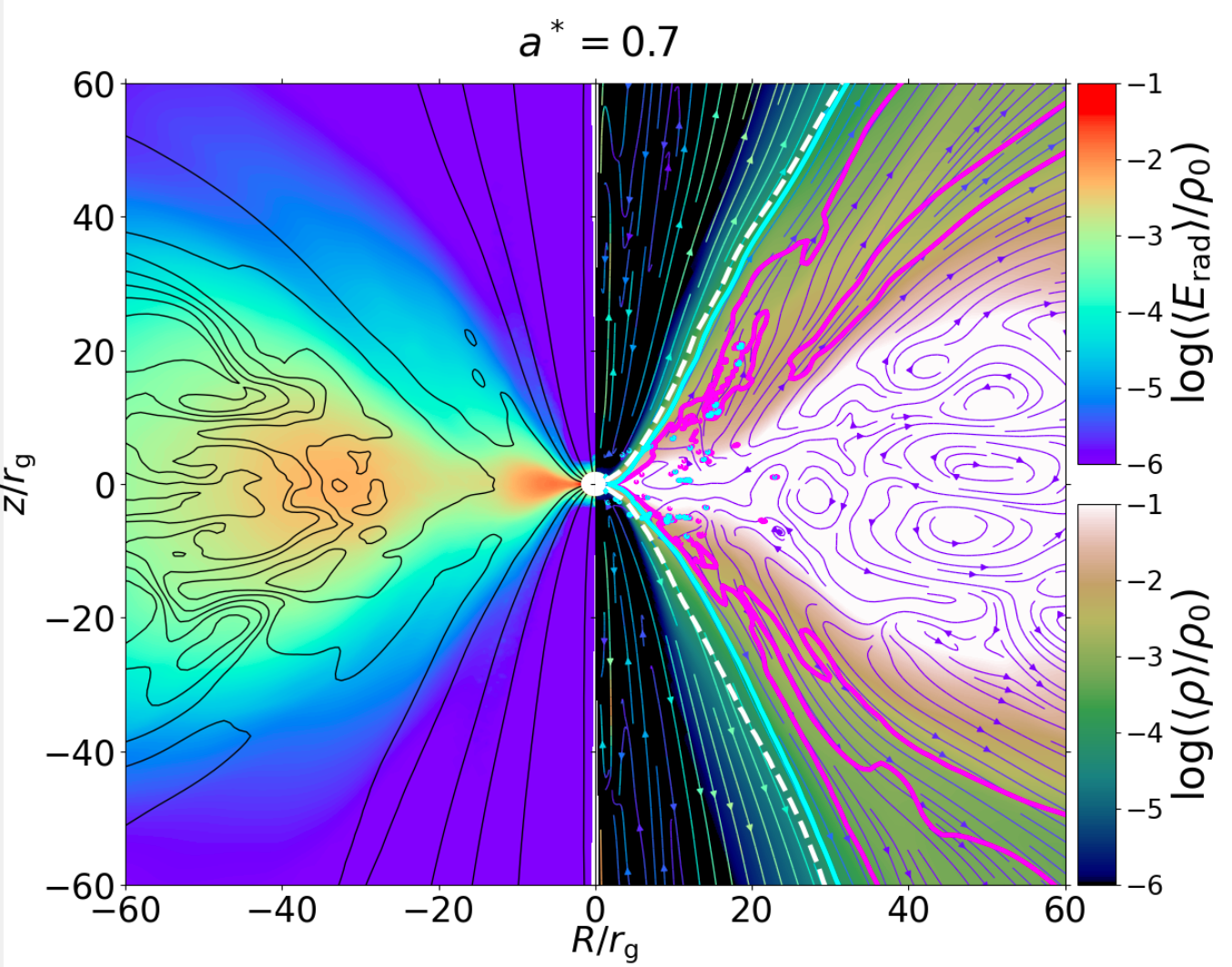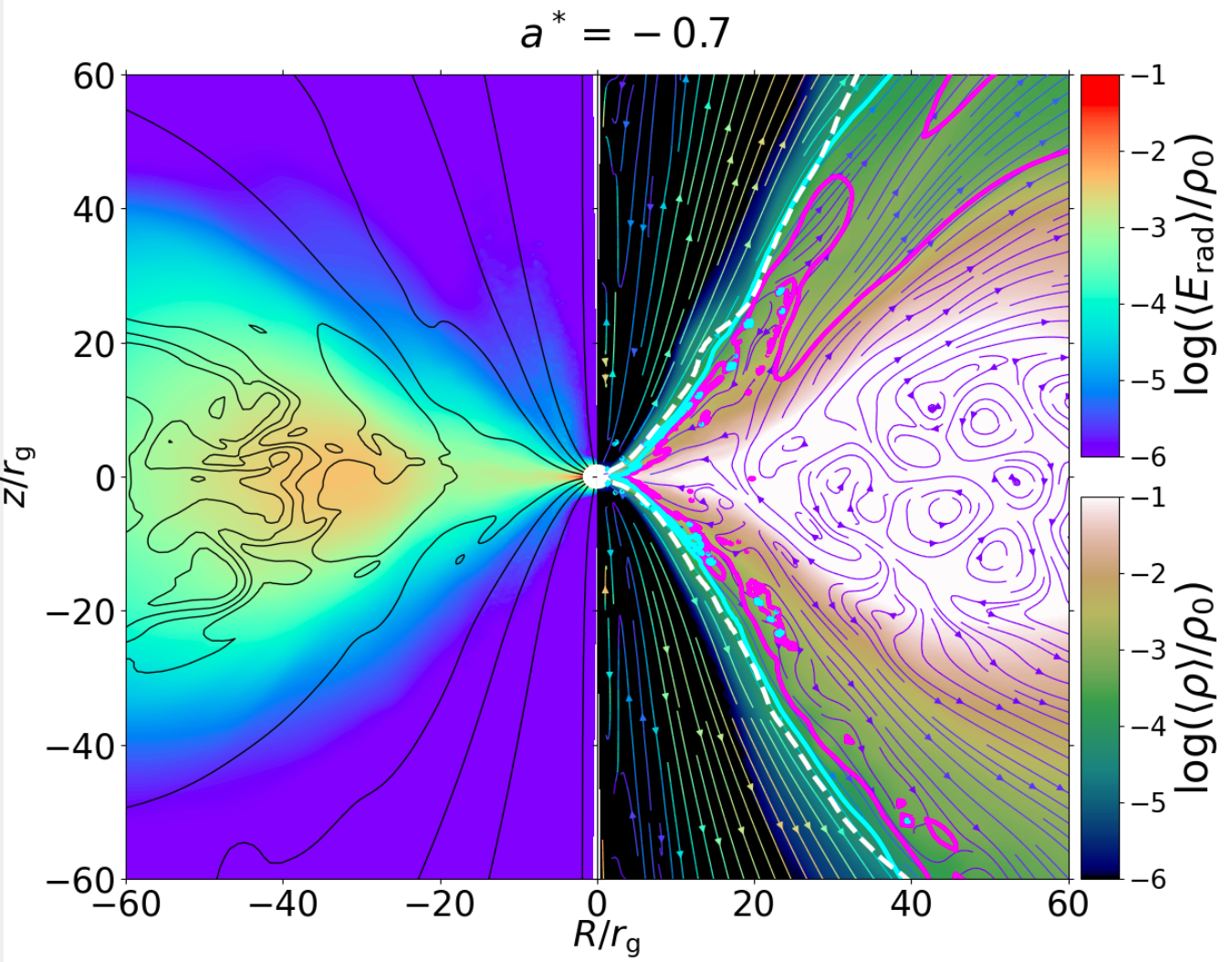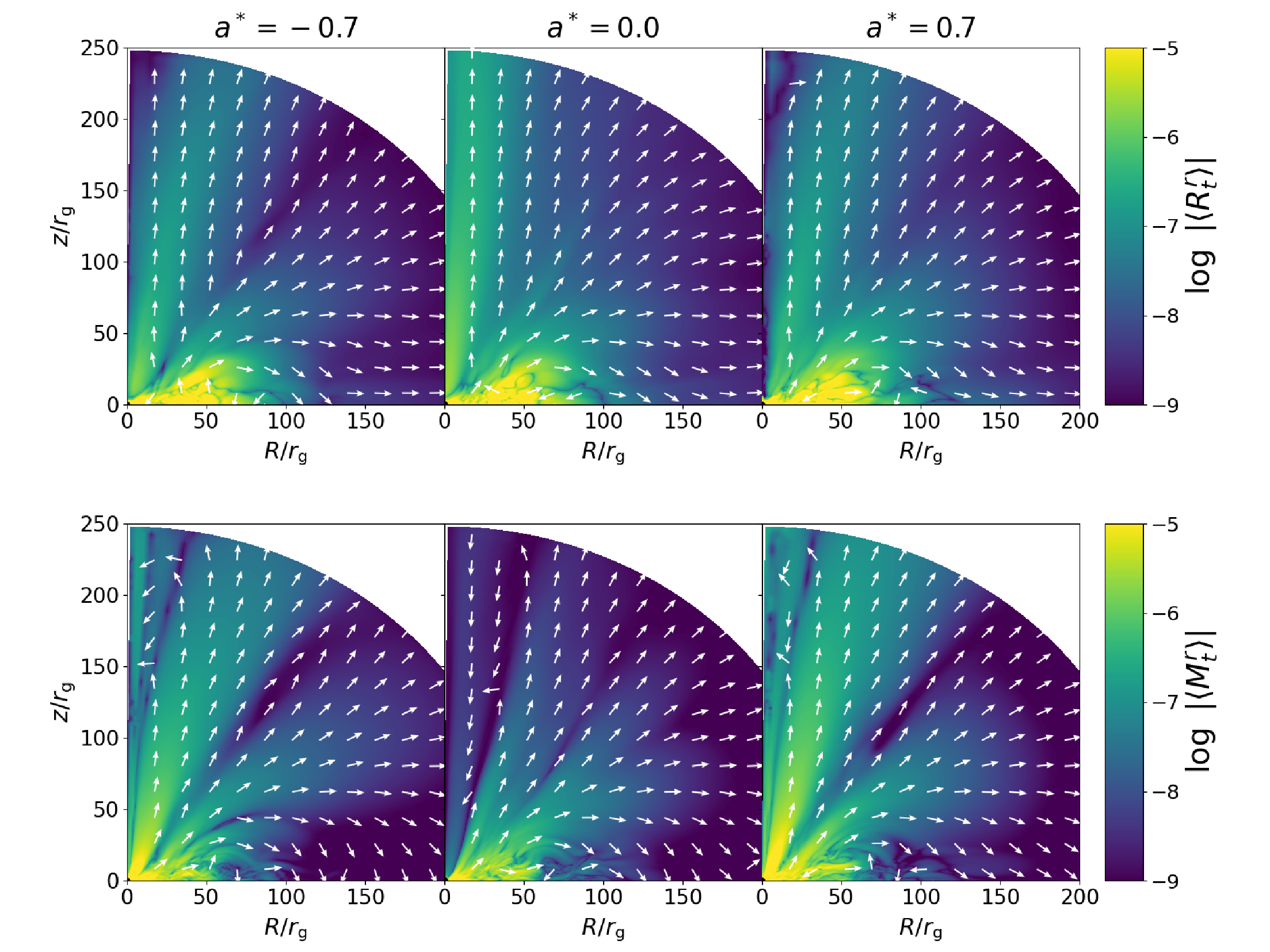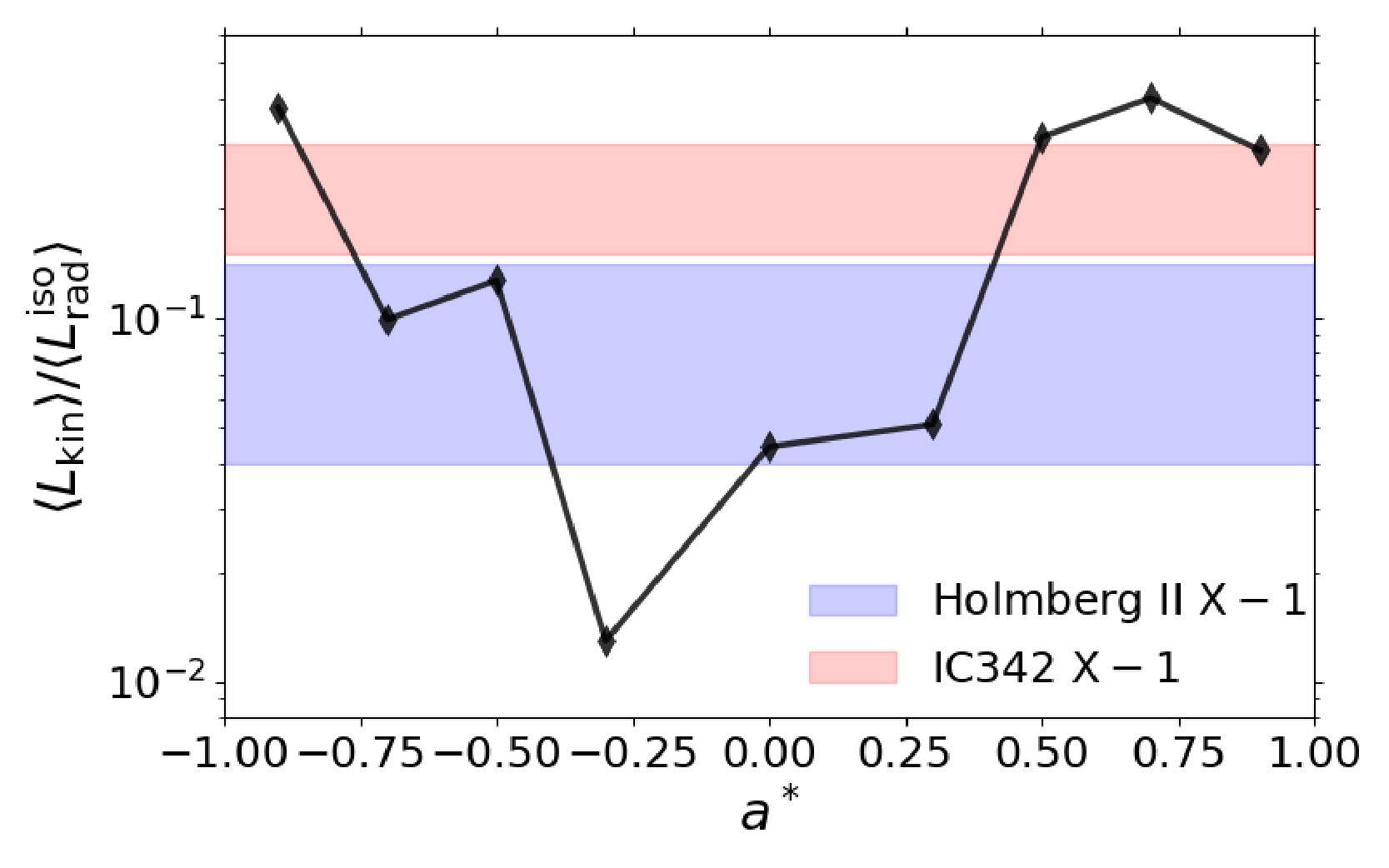研究成果・発表論文
Component of Energy Flow from Supercritical Accretion Disks Around Rotating Stellar Mass Black Holes
Utsumi, Aoto, Ohsuga, Ken, Takahashi, Hiroyuki R., & Asahina, Yuta
要旨
By performing two-dimensional axisymmetric general relativistic radiation magnetohydrodynamics simulations with spin parameter a* varying from -0.9 to 0.9, we investigate the dependence on the black hole spin of the energy flow from a supercritical accretion disk around a stellar mass black hole. It is found that optically and geometrically thick disks form near the equatorial plane, and a part of the disk matter is launched from the disk surface in all models. The gas ejection is mainly driven by the radiative force, but magnetic force cannot be neglected when ∣a*∣ is large. The energy outflow efficiency (total luminosity normalized by Ṁinc2; Ṁin and c are the mass-accretion rate at the event horizon and the light speed) is higher for rotating black holes than for nonrotating black holes. This is 0.7% for a* = -0.7, 0.3% for a* = 0, and 5% for a* = 0.7 for Ṁin ~ 100LEdd∕c2 (L Edd is the Eddington luminosity). Furthermore, although the energy is mainly released by radiation when a* ~0, the Poynting power increases with ∣a*∣ and exceeds the radiative luminosity for models with a* ≥ 0.5 and a* ≤ -0.7. The faster the black hole rotates, the higher the power ratio of the kinetic luminosity to the isotropic luminosity tends to be. This implies that objects with a high (low) power ratio may have rapidly (slowly) rotating black holes. Among ultraluminous X-ray sources, IC342 X-1, is a candidate with a rapidly rotating black hole.








 Ja En
Ja En